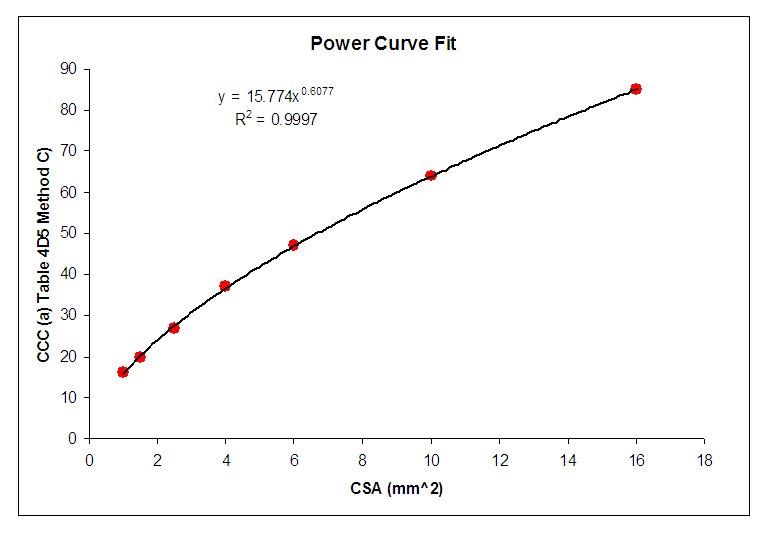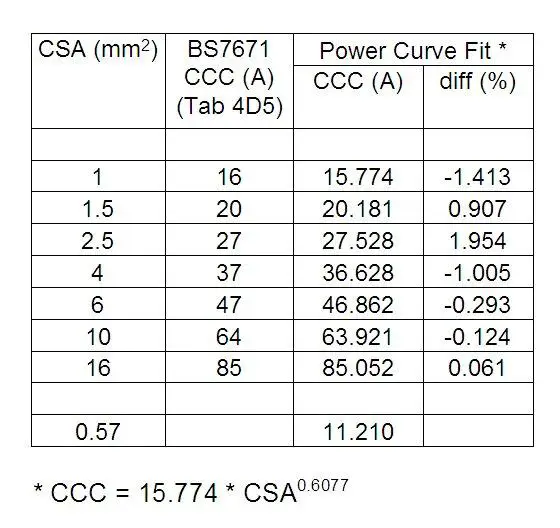Indeed - as I've just said. The figures for flex are, indeed, weird, and maybe reflect 'usage' (mechanical stresses), which probably has more impact as the cable gets smaller - so I'm ignoring them!As I posted on a previous thread the accepted current ratings for small flex are weird, based on the heat dissipation argument one would expect sublinear increases with size but we actually see superlinear increases. I don't think accepted current ratings are tabulated for fixed wiring cables below 1mm.
I'm on the case - watch this space!When I tried to analyse things from first principles I got a power law with a power of 0.75. Comparing with BS7671 current ratings showed that the BS7671 ratings were more sublinear than that. I didn't go as far as trying to fit a power law to the BS7671 ratings but I would be interested in the results if anyone does try.
Kind Regards, John



